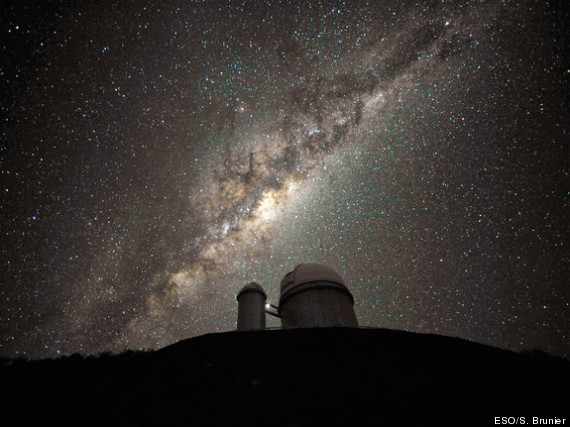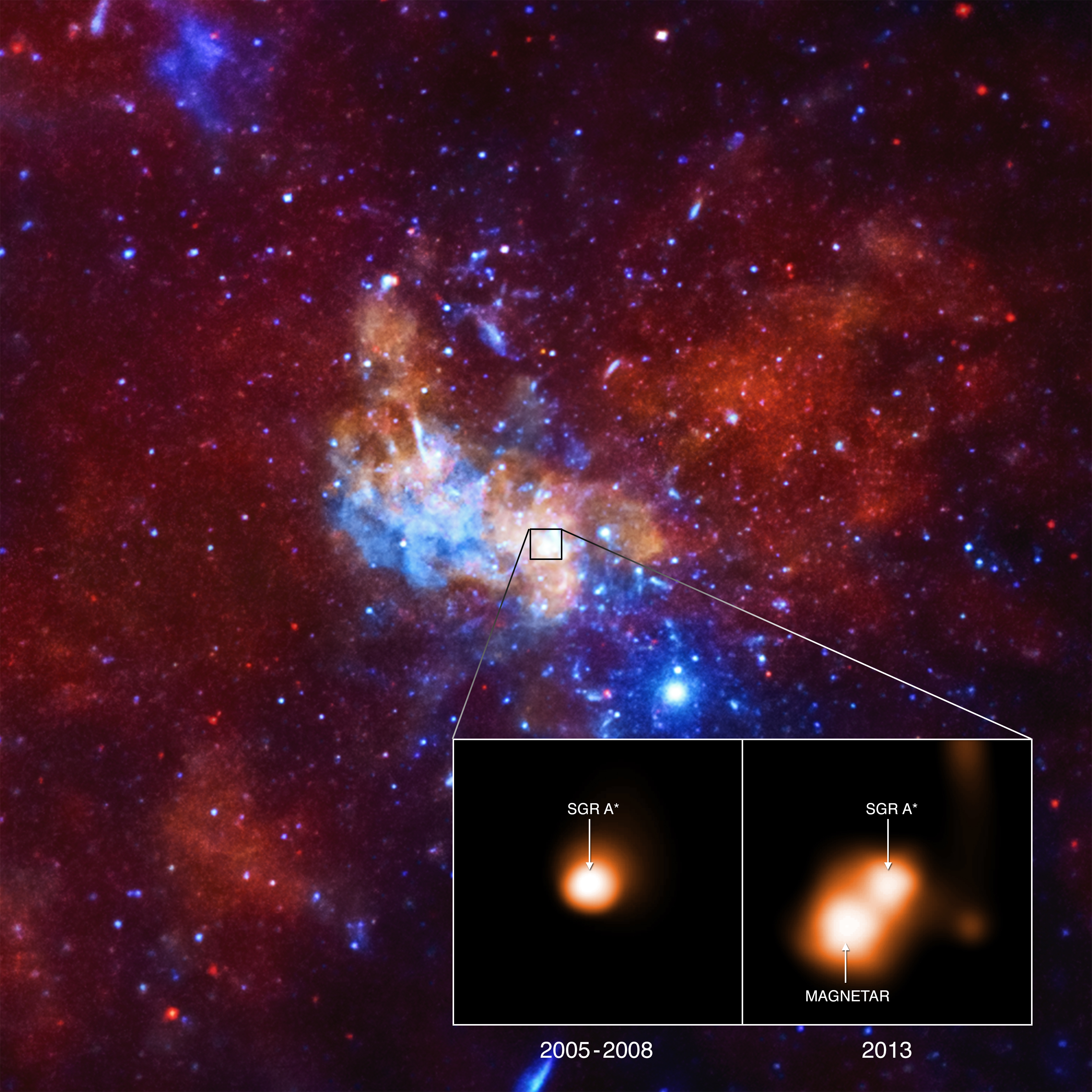As I’ve said before, the most powerful, most energetic, most intense processes happen in the center. The gravitational center of the Earth, the Sun, and the galaxy are all places where temperature, pressure, and interactions of matter and energy are pushed to their limits. When you look up to the sky it’s easy to see the Milky Way (unless you live in an urban center). Do you ever wonder where the middle of it is? Where that supermassive black hole lies? Astronomers know where it is, but you need infrared cameras to see it past the thick dust that blocks it from our view. So let’s take a journey together, from the view of our sky on Earth, all the way to the galactic center.

The first step is to go beyond the Milky Way and look back to our galaxy to get a sense of where we are, and where we are looking when we look to the galactic core. The Sun is roughly two-thirds of the way out from the center of the galaxy to the edge, on a spiral arm called Sagittarius. When we see the Milky Way in the sky, we can be looking toward the core or in the opposite direction and still see the milky band of starlight. Of course it’s brighter toward the center.

The center of the galaxy is in a region with bright glowing starlight, marked with dark dust lanes, though it’s probably not exactly where you imagine it to be. We can’t actually see the center from Earth, because it’s blocked by the thick dust along the galactic plane. So where is it exactly?

Looking for the teapot shape of the constellation Sagittarius, the spout of the teapot roughly points to the galactic core. It would be hard to choose the right spot without it being labeled in the image above. This is why we now have to move to infrared light, which can pass through the obscuring dust to reveal the structure of the vast central region. In the NASA image progression, we get a sense of how compact the core is in addition to how tough it is to find.

In the bottom part of this image we can see where the core cluster is located, with the brightest and most tightly packed stars. Infrared doesn’t give us much more than this, and from the above image you would never know that a supermassive black hole lurks within like a dark monster. Once we move to X-ray and Gamma ray light, you’ll see the signature of a powerful engine.


Now we see the telltale signs of a black hole. The massive release of energy, an environment blasted by powerful radiation, and a cluster of incredibly massive stars. This is where stars are moving so quickly under the influence of gravity that we can see the stars moving year to year. A giant cloud of hot gas moved right past the black hole, named Sagittarius A* in 2014. Although it was supposed to be torn to shreds, it passed by relatively unharmed, due to the fact the hot gas was actually a shrouded star.

It’s important to mention that some of the most massive stars known are located near the galactic center. Many of them have masses 200 times that of the Sun, giving them enormous energy output. It’s a turbulent place you would never want to go. The temperature and radiation pressure would fry you in an instant. But this is what I meant when I said the center is where the limits are pushed. It’s one of the closest places to Earth where we can study a black hole and it’s interaction with the local environment, and it’s always hanging above out heads, shrouded in dust, blocked by stars, blended into the vast glowing Milky Way.
